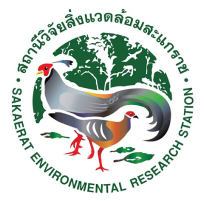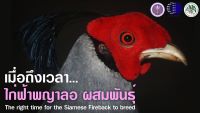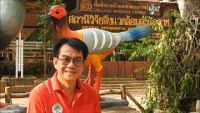Keywords :
Macrotermitinae; Termite; Interspecific cohabitation
บทคัดย่อ :
Intraspecific social behavior and interspecific mutualism both involve cooperative behaviors and so are superficially convergent. Consequently, theoretical-conceptual treatments of them may also converge. However, different types of biological "cooperation" can take many forms, and they vary widely in their expression. This has fiustrated attempts to generate a general theory. One biological system with potential overlap between intra- and interspecific cooperation involves termite mound associations. These extended multispecies groups occur when mound building termite colonies acquire heterospecific tenants. While traditionally seen as parasitic, host-tenant associations may actually involve benefits for mound-building hosts. 1 tested the hypothesis that benefits accrue, and that host-tenant interactions are cooperative in ways analogous to those of same colony (conspecific) groups through a series of studies testing for recognition between cohabiting termites, nest improvements, defensive advantages, and better access to digestive symbionts in relation to cohabitation. My tests for nestmate recognition among cohabitants indicated that termites reject members of cohabiting colonies less frequently than individuals from outside of nest mounds. This indicates possible ecological interactions occur between cohabitants. Further tests for beneficial ecological interactions in the form of habitat and range expansions using a Geographic Information System (GIS) yielded mixed results, but suggested that there are environmental limitations on the ways and places termites nest. In a more direct experimental study, I tested for defensive advantages to association by gauging the responses of different cohabiting termites to simulated attacks. These results indicate that tenants contribute little, if at all, to overall mound defense. Finally, 1 tested for overlap in host and tenant symbionts using genetic analyses of the symbiotic fungal gardens termites grow in nest mounds. The results of these tests indicate that there is site-specific overlap in types of fungi different termites cultivate. Attempts to generate within-mound resolution were inconclusive, owing to base pair polymorphisms in the sequenced DNA. Collectively, the results of these studies indicate that there are positive, as well as negative, aspects to host-tenant interactions. I discuss these in relation to other biological systems and offer directions for future research on termite associations.
พฤติกรรมทางสังคมของสัตว์สายพันธุ์เดียวกันและต่างสายพันธุ์ เกี่ยวข้องกับพฤติกรรมซึ่ง แสดงให้เห็นถึงความร่วมมือกันจากการสังเกตุในขั้นต้น ดังนั้นการศึกษาพฤติกรรมดังกล่าว จึงควรอ้างอิงทฤษฎีหลากหลายทฤษฎีรวมกัน อย่างไรก็ตามความร่วมมือทางชีววิทยามี รูปแบบที่แตกต่างกันซึ่งก่อให้เกิดความยากในการสร้างความเข้าใจที่ตรงกัน เกี่ยวกับการ ศึกษาพฤติกรรมของสัตว์ในข้างต้น
ระบบทางชีววิทยาระบบหนึ่งซึ่งแสดงให้เห็นถึงความร่วมมือของสัตว์สายพันธุ์เดียวกันและ ต่างสายพันธุ์คือการอยู่รวมกันและการปฏิสัมพันธ์ของปลวก การรวมตัวของปลวกหลาก สายพันธุ์เกิดจากการที่ปลวกที่เป็นตัวสร้างรังน่าสมาชิกจากต่างสายพันธุ์มาอาศัยในจอม ปลวกเดียวกัน ถึงแม้ว่าปลวกต่างสายพันธุ์เหล่านี้อาจดูโดยทั่วไปเหมือนตัวอาศัย (tenant) ที่แสวงหาผลประโยชน์จากปลวกเจ้าของที่ (host) แต่ความจริงแล้วการปฏิสัมพันธ์ระหว่าง ปลวกเจ้าของที่กับปลวกตัวอาศัยอาจสร้างประโยชน์ให้กับปลวกเจ้าของที่ด้วย เนื่องจาก ปลวกตัวอาศัยสามารถช่วยปลวกเจ้าของที่ในการปรับปรุงรัง การป้องกันตัวหรือช่วยให้เข้า ถึง organism ที่ทำหน้าที่เป็นตัวช่วยย่อยสลายอาหารภายในจอมปลวกได้ดีขึ้น
ภายใต้องค์ประกอบของความเป็นไปได้เหล่านี้ผู้เขียนได้ทำการทดสอบพฤติกรรมการ ปฏิสัมพันธ์ระหว่างปลวกเจ้าของที่กับปลวกตัวอาศัยในพื้นที่วิจัยภาคตะวันออกเฉียงเหนือ ของประเทศไทยและพบว่าปลวกทั้งสองประเภทนี้ปฏิบัติต่อกันเหมือนเป็นสมาชิกจากสาย- พันธุ์เดียวกัน จึงสรุปได้ว่าการปฏิสัมพันธ์ของปลวกจากต่างอาณาจักร (ต่างสายพันธุ์กัน) ซึ่งอาศัยอยู่ในจอมปลวกเดียวกันมีลักษณะเดียวกันกับการปฏิสัมพันธ์ของปลวกที่มาจากอาณาจักรเดียวกัน (สายพันธุ์เดียวกัน)
จากข้อสรุปดังกล่าวผู้เขียนจึงได้ทำการทดลองทางอ้อมโดยศึกษาการขยายพื้นที่ในการใช้ รังของปลวกและพื้นที่ที่ปลวกใช้เป็นอยู่อาศัยผ่านทางการสำรวจและท่าแผนที่ระบุที่ตั
เอกสารอ้างอิง :
Schaedla, W. H. (2004). Interspecific cohabitation, corecognition, and cooperation in Thailand s Macrotermitinae (Isoptera). Arizona State University.



